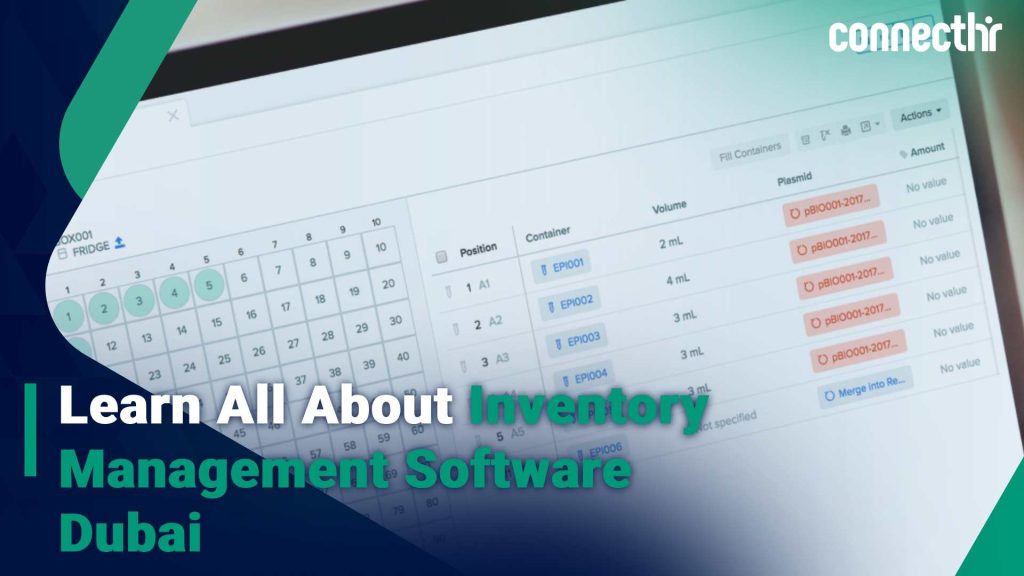Role based access control (RBAC) is one of the most effective ways to control user access to your system. In this way, you can have greater security about who accesses the sensitive data of your company since you are the one who guarantees access to the appropriate users.
In this article, we will show you what this type of access control refers to and what benefits you can get with your application. Likewise, you will be able to know some details that will help you to be more successful in selling your products or services.
Role-Based Access Control Components Explained
The user can gain role-based access that is compliant with Role Based Access Control (RBAC). Additionally, you can assign people roles where they can acquire permissions to entities or systems. Likewise, there are some RBAC components and functions that belong to the security system of an organization that you will see in the following list:
Users
Before you can control access to people data, you must first create users and be able to manage them. Also, part of the job of a network administrator is to create user accounts and ensure they have the necessary permissions.
On the other hand, depending on the role of the person, the administrators will be responsible for assigning privileges to each account. For example, for an IT administrator who must have basic-level access, they will only get permissions tailored to the work they will be doing.
Additionally, role-based security can be easily enforced under a policy following job roles such as IT administrator or controller. In the same way, you can create more group membership settings including factors such as location, office type, and time zone, among others.
RBAC roles
To implement Role Based Access Control you must first define the roles you will need. In this case, a role will be a fairly simple object, but it plays an important role in managing permissions. You can then uniquely create a role and assign access to all necessary resources.
Therefore, you do not need to grant specific actions or resources to individual users. Likewise, defining the roles can help them avoid security problems and can ensure that everyone uses the necessary resources. Logically, users can manage the functions they implement through an administrative interface.
In other cases, Role Based Access Control settings will have to be managed manually. Generally, you have to start with any basic components to ensure that everyone gets the permissions appropriate to the role.
Operations
Using an RBAC system you can divide operations, users, and groups. Also, users can perform operations tasks and have multiple permissions to establish more divided access. Otherwise, grouping the permissions will allow each administrator to make license changes without going through each account individually.
In addition, each operation will be applied to each user who has access rights. Also, operations can be named as duties or actions. For example, an action like reading, updating, or deleting the records in a database table counts as one operation.
Objects
An object is an entity that allows the interaction of a user to complete any scheduled task. Thus, the objects can be computer files, HRMS application software, or any other resource. Similarly, each entity has one or multiple access control attributes defining who can use the object and how to use it.
For example, a worker will be able to manage changes to certain records in a database and will need approval before executing any other changes.
Permissions
A Role Based Access Control, like any network, will need the authentication of each user to give them access to resources or information. In addition, within an RBAC system, administrators create a hierarchy between users and groups to establish permissions. Likewise, it maintains stability between the licenses of each one according to the roles and functions they fulfill.
For example, a manager can view all user records as he has the required permissions. However, administrators can only access their own records. Therefore, the implemented measures ensure that users cannot gain unnecessary access to the system. In the same way, it guarantees the confidentiality of some operations belonging to your organization.
RBAC session
Generally, there is one session for each user at any given time. Also, this action lasts for as long as the user is logged into their account and can be verified to identify the actions they are performing. Likewise, in the system, there can be several users connected in different accounts, each one with a different session of their own.
On the other hand, in a computer, each action belongs to an associated form session ID that identifies the membership of the user. In the same way, when the person closes the browser, as a consequence the sessions end. Differently, when opening other browser windows or starting the session in another location, the sessions will remain open.
Therefore, all sessions you open will remain available because they are connected due to cookies stored on your hard drive.
Why you should care about RBAC?
When working in an organization like IT you will be assigned some kind of Role Based Access Control system. If not, you can implement one to prevent and protect yourself from insider threats. In addition, for large companies in any industry this system is essential but a large part of small businesses do not have it.
This kind of control is similar to other types of systems in that they define what a user can and cannot do on a network. However, it offers greater advantages than those of traditional systems in companies. For example, you can create appropriate security policies according to the actual jobs of the employees.
This helps ensure that there are no mismatches between what employees need and the security policy of a company. Likewise, users can know the origin of their permissions and which ones they have to access certain resources. Though, this type of system also has its drawbacks like any other system, so you should think about it before deciding on RBAC.
For example, one of the problems that can arise occurs due to abuse of access by users. As a consequence, it can lead to data theft, system corruption, and denial of service attacks on the platform. However, constant monitoring of the system can prevent these kinds of adverse circumstances.
Therefore, when you notice a similar problem with the security and data of the company, you should take immediate measures to these actions. In this way, you will avoid the occurrence of more serious situations that could compromise the information in your system.
Benefits of role-based access control
Apart from those mentioned, RBAC access control can offer multiple benefits, including the following:
- Improvements in operational efficiency. With the RBAC system, companies reduce the need for paperwork and password changes when hiring new employees or changing functions. In addition, it allows an organization to quickly add or change employee roles, deploy platforms, applications, and operating systems.
Also, you can avoid mistakes made by users. In the same way, with RBAC software, a company can easily integrate third-party users by giving them default roles.
- Improved compliance. Every business or organization must comply with local, state, and federal requirements and regulations. In this case, RBAC systems are widely used by companies to comply with regulations and maintain confidentiality and privacy.
It also enables executives and IT departments to effectively manage data access provision and management. Likewise, financial institutions and health organizations that manage certain confidential data opt for the use of this system.
- Greater visibility. You can have greater visibility and supervision of the business with Role Based Access Control. In addition, previously authorized users or guests can access what they need to get the job done.
- Costs reduction. Systems may restrict user access to some processes and applications or programs. In the same way, businesses can make resources like network bandwidth, memory, and storage more cost-effective.
- Decrease in data leaks and risks of breaches. Companies can maintain the confidentiality of the data they handle with the use of RBAC management. Also, it represents a reduction in data leaks and possible system violations.
Custom employee roles
Role Based Access Control systems predefine these to give employees access to different applications. In this case, the roles are part of the security system to guarantee access only to the necessary information of each user. Additionally, users can choose from several categories and select a predefined role or create a custom role.
These types of roles allow you to create your roles, group system applications, and establish the access privileges of each one. In this way, custom roles allow exclusive access to certain features inherent only to that specific role.
Importance of Role Based Access Control
Role Based Access Control allows you to have control over the security of your business data. This is because only you grant the necessary access to each employee in your company according to their roles. In this way, it controls what operations its workers can carry out according to the established hierarchical level.
The Essential Customer Service Metrics Every Business Should Track
For your business to have the best results when it comes to customer service, you need to measure certain aspects. Thus, the following list shows the most important customer service indicators to take into account.
First response time
Generally, the first impression can play a very important role in customer service. Therefore, it is important to measure the initial time between the first moment when the client sends a message and the response of the corresponding team. Thus, the shorter the time, the better impression the user will have.
Mean resolution time
The average resolution time consists of the measurement of the time that elapses from the first message of the client until the resolution.
Preferred communication channel
With the increase in digital communication channels in recent times, such as social networks, users can communicate in various ways. Therefore, you have to ensure the experience and satisfaction through all the channels you can handle.
Customer Satisfaction Index
An important part of the key performance indicators (KPI) consists of the customer satisfaction rate. In addition, you can aspire to achieve a final goal and get the loyalty of all your customers. In this way, by measuring this aspect you will guarantee that each client is happy and satisfied with the products or services that you offer.
Customer retention rate
You can determine the success of your business with the customer retention rate. Likewise, retention is viewed as all the steps you take to retain your existing customers. Also, tracking customer retention rate will allow you to determine what keeps your users loyal and make improvements accordingly.
Measurement of customer abandonment
Customer churn rate is a measure of the percentage of customers you lose over time. For example, the measurement starts with customers who cancel their subscriptions or who are non-recurring.
Sales Enablement Strategies: Accelerating Deal Closures for Success
These strategies are essential for the sales teams of your business to face the challenges and obtain maximum performance. This approach is about equipping your teams with the resources, training, and tools to close deals and hit sales goals. In this case, some of these strategies are the following:
- Define the sales objectives that you want to achieve clearly and precisely.
- Foster collaboration between relevant teams in the sales process.
- Invest in and develop sales training programs that cover all aspects of sales.
- Make sure your teams have access to the necessary tools and resources.
- Personalize sales content according to the needs and preferences of your customers.
- Establish feedback and seek improvements on an ongoing basis.
- Use metrics to analyze the results.
Effective Sales Forecasting Guide for Business Success
Sales forecasts allow you to analyze past and current sales to project their performance in the future. This way, you can anticipate challenges and push yourself accordingly to meet sales targets. Therefore, to make this forecast, you can be guided by the following elements:
- Choose the appropriate method for forecasting, such as historical forecast, opportunity stages, etc.
- Adequately identify the active products that you have in your company and discard the discontinued ones.
- Establish the price of your products and services and estimate the volume of sales.
- Consider costs of sales.
- Streamline the process and manage data effectively when considering your inventory.
With Role Based Access Control you can ensure the security of your business data by restricting access. Thus, if you want to improve the security of your data, Connect HR helps you with this feature with our specialized software. Therefore, contact us to improve this and other processes in your organization.






